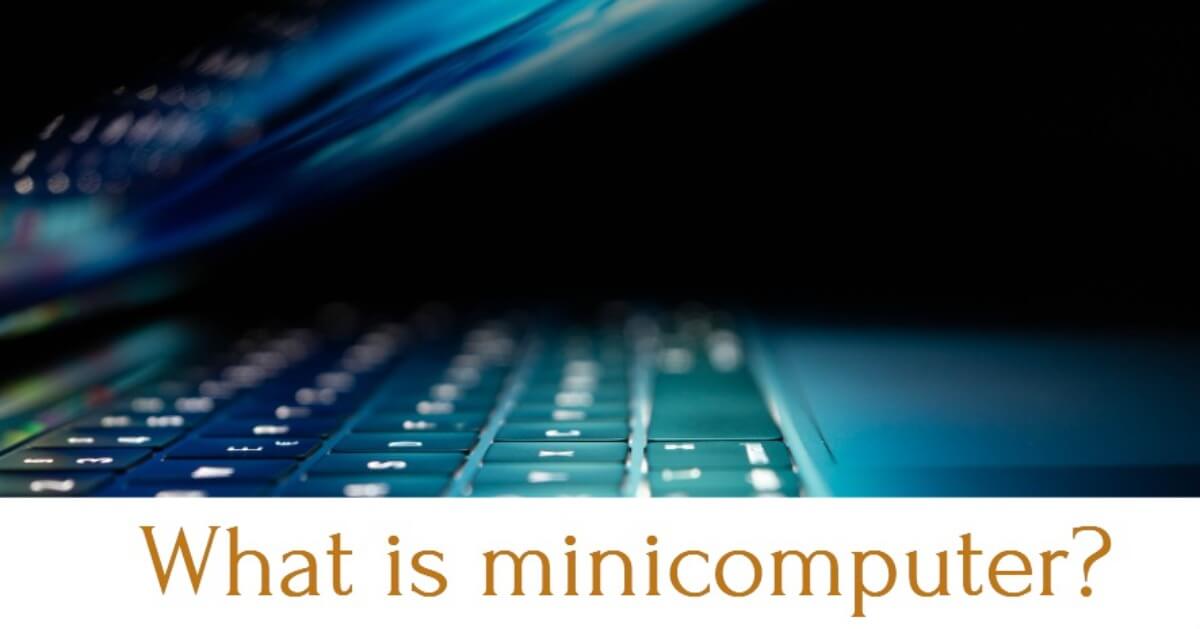A minicomputer is a type of computer with many features and capabilities of a large computer but is smaller in physical size. A minicomputer fills the gap between the mainframe and microcomputer. It is also called a mini frame computer. Smaller than mainframe computers, these computers can be used by many users simultaneously through terminals.
Mini computers can also be called mid-range computers. This type of computer is used by various small businesses and commercial organizations. In addition, mini-computers are also used for file handling, database management, and scientific and engineering calculations. These computers are very small in size. Mini computers can be used in commercial establishments such as clinics, banks, industrial establishments, hospitals, large garment factories, multinational companies, etc.
Examples of Mini Computers: IBM System/3, Honeywell 200, IBM S/34, IBM S/36, PDP-II, etc.
What is a Minicomputer?
Minicomputers are computers that are smaller, less expensive, and less powerful than a mainframe or supercomputer but more expensive and more powerful than personal computers. Minicomputers are used to do scientific and engineering computations, as well as business transaction processing, file management, and database administration.
Characteristics of mini computer:
A minicomputer is a multiprocessor system that can run multiple processes in parallel and is capable of processing more than 200 user requests simultaneously.
Minicomputers were created, offering powerful hardware at a lower cost than mainframes, as well as an easier way to connect scientific instruments and other inputs. and output devices with common architectures.
In addition to the possibility of access to the expansion or modification of internal electronics and the simplicity of minicomputer design, they made this class of equipment versatile, which is why it was practically acceptable in fields such as science and engineering. Another important feature of minicomputers is multiprocessing, for example, the ability to process multiple tasks or requests at the same time.
The flexibility of these computers makes them suitable for use in various fields of scientific and engineering research, business operations, commercial transactions, banking and finance, data processing, and database administration. Although at first the minicomputer was intended to be a support for the mainframe, where it controlled all the operations, and others were to assist the work of various departments of the organization to process data.
For engineering, minicomputers had a more prominent role because the most difficult calculations could be designed and communications and other types of functions programmed, where they became essential tools. Calculations and tasks that used to be done by hand can now be done in a simpler and more automated way, allowing the efficient sharing of data between different departments.
These minicomputers had a very favorable set of features for their time, which helped make them one of the most sought-after devices on the market in terms of design, function, and handling.
To better illustrate its most notable features, they are summarized below:
- They were designed for easy connection to scientific processes.
- Connecting input and output devices was very easy and convenient.
- They had fast transistors.
- They didn't offer high-level language support.
- They are programmed in assembly language.
History of the Minicomputer
Importance of mini computer
- Its speed and efficiency in doing manual operations and processes allow them to be accomplished in the shortest amount of time. increased productivity and lower labor expenses.
- Minicomputers are used in the scientific field to track numerous events in the solar system and weather and to determine how they may evolve over time.
- in education that helps to enrich the entire teaching and learning process, making information more fluid and allowing for the tracking of progress and contributions in many areas of knowledge.
- At the commercial level, they enable the design and production of a variety of goods, promotions and marketing campaigns, inventory management and processing, keeping accounts payable and receivable up to date, paying employees, and maintaining contact with banking systems.
- The advent and widespread usage of the Internet, the ability to send and receive emails and multimedia information, distant learning, and online commerce.
Difference between Mini Computer and Micro Computer:
| Matter of difference | Mini computer | Micro computer |
|---|---|---|
| Definition | It is a small computer that was first introduced in 1960 and is used to operate commercial and scientific software. | It is a personal computer that was first introduced in 1970. |
| Size | Larger in size than microcomputers. | Smaller in size than a mini computer. |
| Speed and efficiency | Speed and efficiency are higher than in microcomputers. | Speed and efficiency are much lower than minicomputers. |
| Terminal | Multiple terminals can be connected. | No terminal can be connected. |
| User | Multiple users can work through the terminal simultaneously. | Only one person can work at once. |
| Price | Cost much more than microcomputers. | Cost much less than a minicomputer. |
| Management and maintenance | Operation and maintenance costs require more than a microcomputer. | Operation and maintenance cost much less than for a minicomputer. |









0 Comments